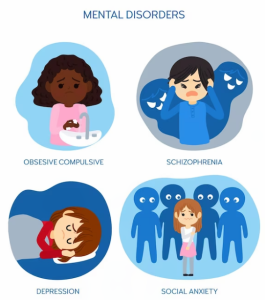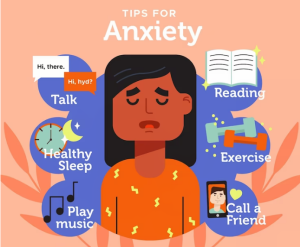Introduction
Fear is a universal emotion that everyone experiences at some point in their lives. However, for some individuals, fear can escalate into phobias – intense and irrational fears of specific objects, situations, or creatures. Phobias can disrupt daily life and cause significant distress. In this article, we will explore a comprehensive list of phobias, ranging from common to obscure, in alphabetical order, shedding light on the origins and effects of these fascinating fears.
Table of Contents
- Understanding Phobias
- What are phobias?
- Causes of phobias
- Impact on daily life
- Common Types of Phobias
- Arachnophobia (fear of spiders)
- Acrophobia (fear of heights)
- Claustrophobia (fear of confined spaces)
- Ophidiophobia (fear of snakes)
- Social anxiety disorder (fear of social situations)
- Aerophobia (fear of flying)
- Uncommon Phobias
- Cynophobia (fear of dogs)
- Trypophobia (fear of clustered patterns)
- Pogonophobia (fear of beards)
- Nomophobia (fear of being without a mobile phone)
- Somniphobia (fear of sleep)
- Phobias Related to Nature
- Hydrophobia (fear of water)
- Astraphobia (fear of thunder and lightning)
- Entomophobia (fear of insects)
- Chiroptophobia (fear of bats)
- Brontophobia (fear of storms)
- Medical and Health Phobias
- Trypanophobia (fear of needles)
- Dentophobia (fear of dentists)
- Nosocomephobia (fear of hospitals)
- Thanatophobia (fear of death)
- Hemophobia (fear of blood)
- Phobias Associated with the Mind
- Agoraphobia (fear of open spaces)
- Phonophobia (fear of loud sounds)
- Thalassophobia (fear of the sea)
- Nyctophobia (fear of darkness)
- Emetophobia (fear of vomiting)
- Culture-Specific Phobias
- Triskaidekaphobia (fear of the number 13)
- Hexakosioihexekontahexaphobia (fear of the number 666)
- Samhainophobia (fear of Halloween)
- Hellenologophobia (fear of Greek terms)
- Anglophobia (fear of England and English culture)
- Managing Phobias
- Seeking professional help
- Cognitive-behavioral therapy (CBT)
- Exposure therapy
- Relaxation techniques
- Medication
Understanding Phobias
Phobias are a type of anxiety disorder characterized by persistent, excessive, and irrational fears. These fears can be triggered by specific objects, situations, or even thoughts. Phobias are more than just a normal fear response; they can lead to panic attacks, avoidance behavior, and a decline in one’s quality of life.
Causes of Phobias
Phobias can develop through various factors, including genetics, traumatic experiences, and learned behaviors. For some individuals, a specific phobia may be rooted in a distressing event from the past, while for others, it might be a result of witnessing someone else’s fear.
Impact on Daily Life
Living with a phobia can be challenging, as it may affect daily activities, social interactions, and even career opportunities. Individuals with severe phobias may find it difficult to leave their homes, take public transportation, or participate in activities that others consider routine.
Common Types of Phobias
Let’s take a closer look at some of the most common phobias that affect people worldwide:
Arachnophobia (Fear of Spiders)
Arachnophobia is one of the most prevalent phobias, affecting individuals who experience intense fear and aversion towards spiders. This fear may be triggered by their appearance, movement, or the fear of being bitten.
Acrophobia (Fear of Heights)
Acrophobia is characterized by a severe fear of heights and tall structures. Those with acrophobia may experience anxiety, dizziness, and sweating when exposed to heights.
Claustrophobia (Fear of Confined Spaces)
Claustrophobia involves an irrational fear of enclosed or confined spaces. People with claustrophobia may avoid elevators, small rooms, or crowded places.
Ophidiophobia (Fear of Snakes)
Ophidiophobia is the fear of snakes, and it can range from mild discomfort to severe panic attacks when encountering these reptiles.
Social Anxiety Disorder (Fear of Social Situations)
Social anxiety disorder is a broader fear related to social situations. It involves an overwhelming fear of being judged or embarrassed in public settings.
Aerophobia (Fear of Flying)
Aerophobia is the fear of flying or traveling by air. This fear can lead to avoidance of air travel, even when it is necessary.
Uncommon Phobias
While some phobias are well-known, others are more obscure and unique. Let’s explore some of the lesser-known phobias:
Cynophobia (Fear of Dogs)
Cynophobia is an intense fear of dogs, often caused by negative past experiences with these animals.
Trypophobia (Fear of Clustered Patterns)
Trypophobia is characterized by a fear of clustered patterns, such as beehives or lotus seed pods.
Pogonophobia (Fear of Beards)
Pogonophobia is the fear of beards, which may stem from cultural or personal associations.
Nomophobia (Fear of Being Without a Mobile Phone)
Nomophobia is the fear of being without a mobile phone or losing cellular service, a condition increasingly prevalent in the digital age.
Somniphobia (Fear of Sleep)
Somniphobia is the fear of falling asleep, often linked to nightmares or the fear of not waking up.
Phobias Related to Nature
Nature can also be a source of phobias. Here are some examples:
Hydrophobia (Fear of Water)
Hydrophobia involves an intense fear of water, which can lead to avoidance of swimming and other water-related activities.
Astraphobia (Fear of Thunder and Lightning)
Astraphobia is the fear of thunderstorms and lightning, often related to the unpredictability of weather phenomena.
Entomophobia (Fear of Insects)
Entomophobia is a fear of insects and can range from general discomfort to debilitating anxiety.
Chiroptophobia (Fear of Bats)
Chiroptophobia is the fear of bats, often linked to myths and misconceptions about these nocturnal creatures.
Brontophobia (Fear of Storms)
Brontophobia is a fear of storms, including thunderstorms and severe weather events.
Medical and Health Phobias
Health-related phobias can be particularly distressing. Some examples include:
Trypanophobia (Fear of Needles)
Trypanophobia is the fear of needles and injections, making medical procedures challenging for those affected.
Dentophobia (Fear of Dentists)
Dentophobia is the fear of dentists and dental procedures, which can result in poor oral health due to avoidance.
Nosocomephobia (Fear of Hospitals)
Nosocomephobia is the fear of hospitals, often triggered by negative associations with medical settings.
Thanatophobia (Fear of Death)
Thanatophobia is the fear of death or dying, which can lead to existential anxiety and avoidance of discussions about mortality.
Hemophobia (Fear of Blood)
Hemophobia involves an extreme fear of blood, making medical situations and injuries highly distressing.
Phobias Associated with the Mind
Some phobias are centered around mental and psychological themes:
Agoraphobia (Fear of Open Spaces)
Agoraphobia is characterized by a fear of open spaces and situations where escape may be difficult.
Phonophobia (Fear of Loud Sounds)
Phonophobia is the fear of loud or sudden noises, which can lead to a heightened startle response.
Thalassophobia (Fear of the Sea)
Thalassophobia is the fear of the vastness and depths of the sea, including fear of large bodies of water.
Nyctophobia (Fear of Darkness)
Nyctophobia is the fear of darkness or the night, which can be particularly distressing for children.
Emetophobia (Fear of Vomiting)
Emetophobia is the fear of vomiting or witnessing others vomit, leading to avoidance of certain foods or situations.
Culture-Specific Phobias
Certain phobias are specific to particular cultures or regions:
Triskaidekaphobia (Fear of the Number 13)
Triskaidekaphobia is the fear of the number 13, often associated with bad luck.
Hexakosioihexekontahexaphobia (Fear of the Number 666)
Hexakosioihexekontahexaphobia is the fear of the number 666, which is regarded as the “Number of the Beast” in some cultural contexts.
Samhainophobia (Fear of Halloween)
Samhainophobia is the fear of Halloween, related to the spooky imagery and costumes associated with the holiday.
Hellenologophobia (Fear of Greek Terms)
Hellenologophobia is the fear of Greek words or phrases, which may be related to unfamiliarity with the language.
Anglophobia (Fear of England and English Culture)
Anglophobia is the fear or aversion to England or English culture, often rooted in historical or political contexts.
Managing Phobias
While phobias can be overwhelming, there are effective ways to manage and overcome them:
Seeking Professional Help
Consulting with a mental health professional or therapist can provide valuable support and guidance in managing phobias.
Cognitive-Behavioral Therapy (CBT)
CBT is a common therapeutic approach for phobias, helping individuals reframe negative thought patterns and behaviors.
Exposure Therapy
Gradual exposure to the feared object or situation can help desensitize individuals to their phobia over time.
Relaxation Techniques
Learning relaxation techniques, such as deep breathing and mindfulness, can help reduce anxiety associated with phobias.
Medication
In some cases, medications may be prescribed to alleviate anxiety and support the management of phobias.
Conclusion
Phobias are complex and diverse, affecting people from all walks of life. Understanding and acknowledging these fears is the first step towards effectively managing them. Seeking professional help and utilizing various therapeutic approaches can lead to significant improvements in one’s quality of life. Remember, you are not alone in facing your phobias, and help is available to guide you through the process of overcoming them.
FAQs
- Q: Are phobias common? A: Yes, phobias are relatively common and can affect individuals of all ages.
- Q: Can phobias be genetic? A: There is evidence to suggest that phobias can have a genetic component and may run in families.
- Q: Can phobias disappear on their own? A: Some phobias may improve or fade over time, but others may persist without intervention.
- Q: How long does it take to treat a phobia with therapy? A: The duration of phobia treatment varies depending on the individual and the severity of the phobia.
- Q: Can I manage my phobia without professional help? A: While some people may manage mild phobias on their own, seeking professional help can provide more effective and lasting results.



